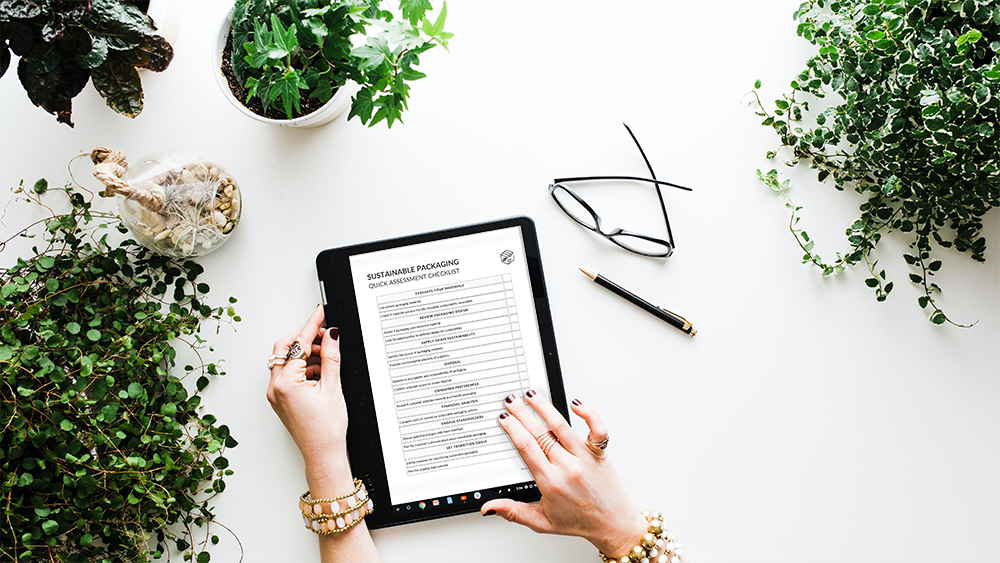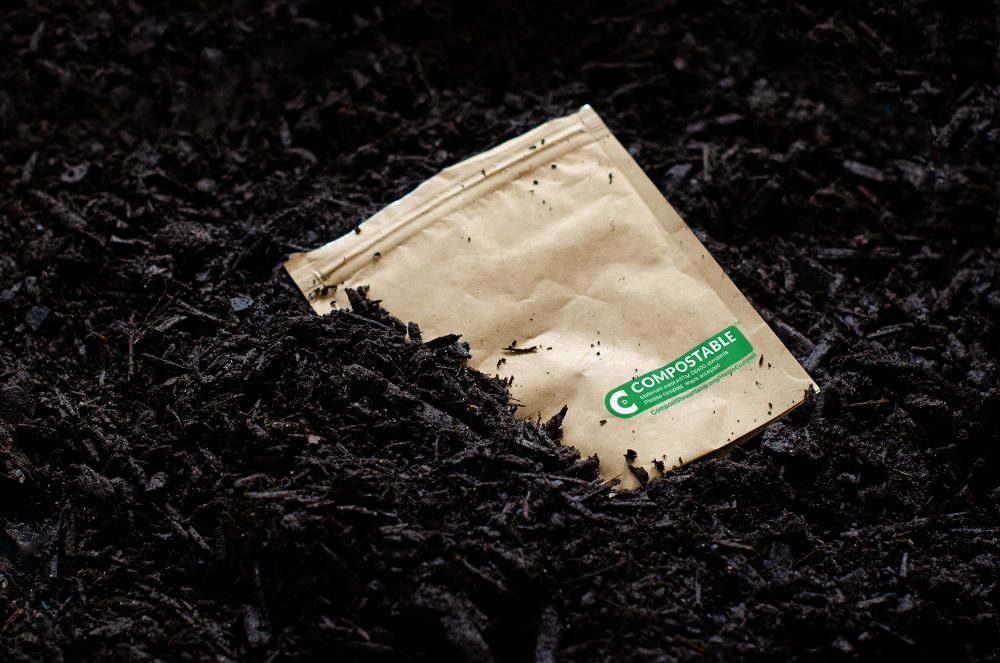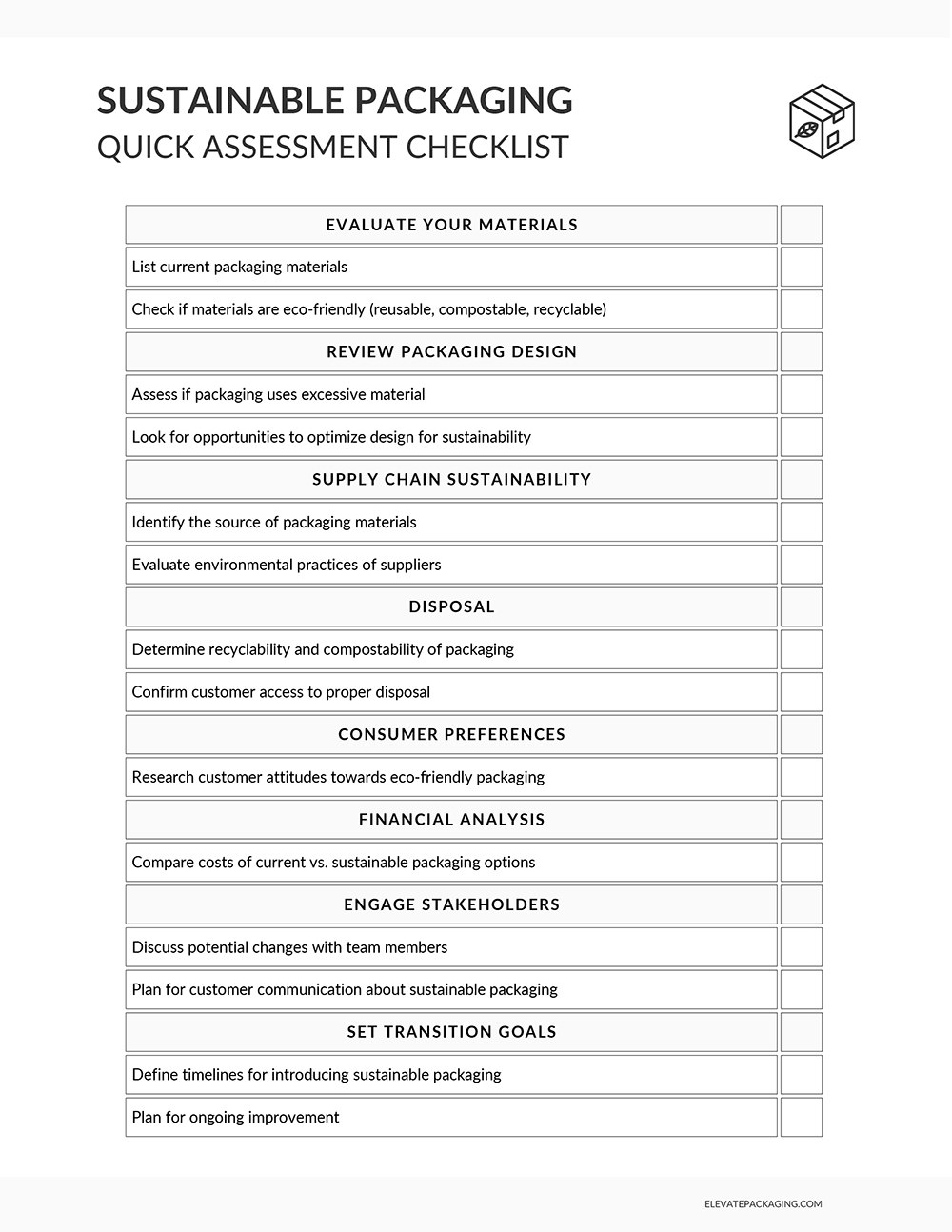Recent Posts
- Home
- Elevate Blog
- Transitioning to Compostable Packaging
Transitioning to Compostable Packaging
Posted on

Why Sustainable Packaging Matters More Than Ever
As the calendar turns to a new year, it's time for businesses to look ahead! Not just in terms of profits and growth, but also in how their operations impact the world around us. In 2024, the importance of sustainable packaging is more pronounced than ever, driven by heightened environmental awareness and a collective call for action against climate change.
This shift isn't just about why sustainable packaging is essential for businesses; it's also about shaping the perception and legacy of your brand in a rapidly evolving market. Circularity is becoming more and more important to consumers, and consumers are aligning their purchases with their values more than ever before.
What does this mean for your business? How can you adapt to become a leader in the sustainable revolution? Consider the role your business plays in. Reflect on the impact of your packaging choices and how embracing sustainability propels your business forward.
Assessing Current Packaging: Your First Step Towards Sustainability
Transitioning to sustainable practices begins with a comprehensive understanding of your current packaging.
This understand goes beyond compliance or brand image. By thoroughly understanding your current packaging practices, you are empowered to make well-informed decisions that align with your core values and resonate deeply with the priorities of your eco-conscious customers.
Read More: Packaging That Aligns With Your Mission
How to Conduct a Sustainable Packaging Audit
A detailed packaging audit can help identify where you currently stand and what steps are necessary to improve your packaging.
- Evaluate Material Use: Examine the materials used in your current packaging. Are they recyclable, reusable, or compostable? Understanding this will help you identify areas where compostable alternatives can be introduced.
- Analyze Packaging Design: Assess whether your packaging is excessively complex or uses more material than necessary. Simplifying and reducing material use can often be as impactful as switching materials.
- Assess Supply Chain Impact: Consider the entire lifecycle of your packaging materials. How does each stage, from production to disposal, affect your carbon footprint and environmental impact?
By combining these assessments and audits into a unified process, you can create a holistic view of the environmental impact of your packaging, and uncover the most effective areas for sustainable improvement.
Embracing the Path to Sustainability
Use our Sustainable Packaging Quick Assessment Checklist to help you get started!
- Evaluate Your Materials
- List current packaging materials.
- Check if materials are eco-friendly (reusable, compostable, recyclable).
- Review Packaging Design
- Assess if packaging uses excessive material.
- Look for opportunities to optimize design for sustainability.
- Supply Chain Sustainability
- Identify the source of packaging materials.
- Evaluate environmental practices of suppliers.
- Disposal
- Determine recyclability and compostability of packaging.
- Confirm customer access to proper disposal.
- Understand Consumer Preferences
- Research customer attitudes towards eco-friendly packaging.
- Financial Analysis
- Compare costs of current vs. sustainable packaging options.
- Engage Stakeholders
- Discuss potential changes with team members.
- Plan for customer communication about sustainable packaging.
- Set Transition Goals
- Define timelines for introducing sustainable packaging.
- Plan for ongoing improvement
Want to do more? Read: How to Conduct a Life Cycle Assessment
Implementing Compostable Packaging in Your Business
After assessing your current packaging, the next step is implementing changes. These changes could be as significant as switching your entire product line from plastic to compostable packaging, or as small as switching to compostable stickers! This guide will walk you through the essential steps for a smooth and effective transition:
Step 1: Identifying Suitable Compostable Packaging Options
Research and identify compostable packaging that suits your business needs. Consider compatibility, durability, and aesthetics.
Step 2: Supplier Engagement and Material Sourcing
Find eco-friendly packaging suppliers who meet your required sustainability standards. Your packaging supplier is your partner, choose one that shares your values and believes in your mission.
Step 3: Cost Analysis and Budgeting
Understand the financial aspects of this transition. Consider both the initial investment and long-term savings. Secure support from key stakeholders by highlighting the environmental and brand benefits of this transition.
Step 4: Design and Branding Considerations
Use this opportunity to potentially redesign your packaging to educate the public and reflect your commitment to sustainability.
Step 5: Implementing the Transition
Plan the rollout of your new packaging, including how you will phase out old materials and train staff on the benefits of the new materials.
Step 6: Customer Education and Marketing
Educate your customers about the change. Utilize various channels to communicate the benefits and proper disposal of compostable packaging!
Read More:Sustainable Packaging Design: Marketing

Engaging Your Community: The Power of Collective Action
Transitioning your business to more sustainable practices involves building a community around shared environmental values. Authentically engaging your community in this transition nurtures a collective sustainable movement.
Understanding the Role of Your Community
Your community's support amplifies your sustainability efforts. Consider how to involve them more in your green initiatives. You can use social media to spread awareness and engage with your audience about your journey and the benefits of compostable packaging.
Communicating the Change to Customers
Share your reasons for switching to compostable packaging with your customers. Transparency builds trust and advocacy.
Involving Employees in the Sustainability Conversation
Educate your employees about the benefits of compostable packaging so they can effectively communicate these benefits.
Collaborating with Suppliers and Partners
Form partnerships with suppliers committed to sustainability. Collaborative efforts lead to innovative solutions and a stronger narrative.
Creating a Feedback Loop
Encourage feedback from your community on your packaging and sustainability efforts!

Lead the Charge Towards a Greener Future
Compostable packaging can be a significant operational change for your business, but it’s so much more than that. Transitioning to compostable packaging is the clearest path to reducing plastic waste. As a business leader, your commitment to sustainable practices positions you as a forward-thinker and environmental steward. Your sustainable choices have a ripple effect, inspiring your customers and other businesses to make changes.
Join the Movement
Commit to making choices that are good for both your business and the planet.
Start your transition to compostable packaging today.
Contact Us
 Loading... Please wait...
Loading... Please wait...



